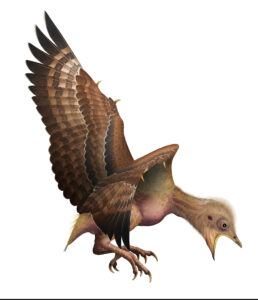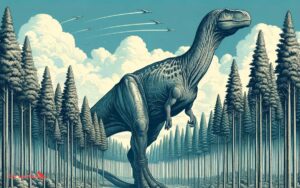What Dinosaur Does Not Exist: Unveiling Myths!
The Brontosaurus is a dinosaur that was once considered fictitious. Later discoveries, however, reestablished its existence in the scientific community.
Dinosaurs have captivated the public’s imagination since their discovery, with fascinating varieties from the massive Tyrannosaurus Rex to the herbivorous Triceratops. Yet, in the whirlwind of paleontological findings over the years, some dinosaurs, like the Brontosaurus, had a tumultuous history of classification.
Scientists once thought the Brontosaurus didn’t exist, labeling it a misunderstanding—a mix-up with another dinosaur called Apatosaurus. Public understanding often falls behind the latest scientific consensus, leading to confusion about which dinosaurs actually roamed the Earth millions of years ago. This introduction starts the discussion on dinosaur classification and the evolving nature of paleontological science that brings clarity to what creatures once existed and which were products of early misclassification or mistakes.

Mythic Creatures Masquerading As Dinosaurs
Welcome to an exploration of prehistoric fantasy where legends abound and history blurs with myth. Beneath the umbrella of dinosaurs, tales of creatures that never roamed our Earth take root, teasing the imaginations of enthusiasts both young and old. These mythic creatures, often deemed misidentified or exaggerated dinosaurs, continue to captivate and confound science and folklore alike.
The Loch Ness Monster Debate
The Loch Ness Monster, or “Nessie,” has stirred the waters of mystery for decades. This elusive creature, said to inhabit the depths of Scotland’s Loch Ness, often gets described with dinosaur-like features. Nessie is imagined as a long-necked, prehistoric reptile – perhaps a plesiosaur that time forgot. Yet, science asserts no concrete evidence to confirm its existence. Sightings and sonar readings still leave the world pondering:
- Is “Nessie” real or merely a fish of tall tales?
- What secrets does Loch Ness hide amid its dark waves?
Dragons: From Myth To Museum
Dragons capture the essence of mythical dinosaurs, breathing fire into folklore across the globe. Ancient texts and artworks often portray these majestic beasts with scales, wings, and reptilian traits. Many cultures weave tales of dragons, each unique in form and function. Museums sometimes showcase “dragon” bones, typically those of misidentified dinosaur fossils. The dragon-dinosaur connection compels us to question:
- Were dragons inspired by dinosaur discoveries?
- How do dragons mirror or diverge from the dinosaur lineage?
Explore these legendary creatures that have sparked wonder and debate. They serve as a testament to humanity’s quest for knowledge of the prehistoric past.

Credit: www.icr.org
Hollywood’s Fictional Dinosaurs
Dinosaurs capture our imagination, taking us back to a world that existed long before humans. Yet, some dinosaurs we’ve come to love from movies and shows never roamed the Earth. These are Hollywood’s creations, designed to thrill and entertain. Let’s explore some of these fascinating, fictional prehistoric beasts that have become just as iconic as their real-life counterparts.
Cinematic Spectacles: The Genetic Hybrids
The concept of genetic hybrids has given us some of the most unforgettable dinosaurs.
“Jurassic World” introduced the Indominus Rex, a dinosaur engineered to be the ultimate predator. Its features are not found in any fossil record. The Indoraptor, a more sinister hybrid, made its appearance in the sequel, creating chaos with its intelligence and ferocity.
- Genetically crafted for awe
- No natural counterpart
- Moviegoers’ favorite monsters
These creatures serve as a warning of science’s power when left unchecked and show the limitless possibilities when imagination meets movie magic.
Dinosaurs Revived: Time-travel Narratives
Another thrilling concept is time-travel to the era of dinosaurs.
In “The Land Before Time”, we journey with Littlefoot and his friends in a story of survival and friendship. No actual records exist of dinosaurs speaking or building relationships as depicted in the film.
| Fictional Character | Notable Feature |
|---|---|
| Littlefoot | Speaks and shows emotions |
| Ducky | Display of human-like empathy |
| Petrie | Humorous and personified |
Time-travel narratives allow for incredible adventures but do not represent the true world of dinosaurs.
Paleontological Misconceptions
Paleontological misconceptions shape how we see dinosaurs. Stories of these creatures spark imagination. But not all dinosaurs we grew up loving were real. Let’s explore some common errors in understanding these ancient beasts.
Brontosaurus Blunders
The Brontosaurus is a famous dinosaur name. But did you know that it was a mistake? For years, people thought this giant long-necked dinosaur roamed Earth. Scientists later realized it was identical to the Apatosaurus. They had two names for the same dinosaur! This mix-up took almost 100 years to fix.
Misidentified Fossils And Their Consequences
Fossils can be confusing. Sometimes bones get mixed up. Imagine finding a puzzle with the pieces from different boxes. That’s what happened with some dinosaur fossils.
| Real Dinosaur | Misidentified As | Impact |
|---|---|---|
| Pachycephalosaurus | Stegoceras | Confusion about headbutting behavior |
| Triceratops | Torosaurus | Debate on growth stages of dinosaurs |
This table shows examples of mistakes. Scientists work hard to fix these errors. They study bones and share knowledge. Understanding gets better over time.
Debunking Dinosaur Hoaxes
In the fascinating world of dinosaurs, truth often outruns fiction. Yet, through the years, numerous dinosaur hoaxes have confused experts and enthusiasts alike. These fabrications, once believed to be true, have since been exposed. Let’s uncover the truth behind some of the most notorious dinosaur hoaxes.
Piltdown Man: Connecting The Dots
Although not a dinosaur, Piltdown Man remains a classic example of prehistoric deception. For decades, this so-called “missing link” in human evolution had experts puzzled. Presented as evidence in 1912, it wasn’t until 1953 that the assembly of human skull fragments and a lower jaw of an orangutan was exposed as a complete fabrication. Delving into the Piltdown Man’s journey uncovers a tale of desire for recognition and the perils of scientific shortsightedness.
The Enduring Legacy Of Archaeoraptor
The Archaeoraptor scandal broke when what was touted as a new bird-like dinosaur species turned out to be a forgery. Reportedly discovered in China and smuggled into the United States, it was a clever composite of different species’ fossils. Featured in a 1999 issue of “National Geographic,” it took almost a year for the truth to surface. The revelation reminded the scientific community of the importance of rigorous peer review and the susceptibility of science to elaborate scams.
Educational Reform In Dinosaur Science
Scientists learn new things about dinosaurs every day. The information we learned in the past might not be right anymore. Changes in what we know make us change how we teach about dinosaurs.
Changing dinosaur science means books and museums must update their info too. New evidence can tell a different story from what we used to know.
Rethinking Dinosaur Presentation In Textbooks
Textbooks need to show the latest dino facts. Old theories make way for new discoveries.
- Fact-check with experts to keep info correct.
- Include new fossils found by scientists.
- Teach critical thinking so kids ask questions.
Museums’ Role In Dispelling Dino-myths
Museums show us what dinosaurs looked like. They must update displays to be true to science.
- Show new skeletons and remove fake ones.
- Use interactive tech to tell dino-stories.
- Have scientists talk to visitors about myths.

Credit: www.snexplores.org

Credit: www.newscientist.com
Frequently Asked Questions For What Dinosaur Does Not Exist
Is A Brontosaurus A Dinosaur?
Yes, Brontosaurus is a type of dinosaur that lived during the Late Jurassic period. It is known for its long neck and large size.
Why Do We Not Say Brontosaurus?
The term “Brontosaurus” is outdated because the correct name for the species is Apatosaurus, a decision made by paleontologists after realizing both names referred to the same dinosaur.
Did The Brachiosaurus Exist?
Yes, Brachiosaurus was a real dinosaur species that lived during the Late Jurassic period approximately 150 million years ago.
What Dinosaurs Aren’t Dinosaurs?
Dimetrodon and Plesiosaurs, often mistaken for dinosaurs, actually aren’t classified as dinosaurs. These creatures existed before and alongside dinosaurs, respectively.
Conclusion
As we unravel the mysteries of prehistoric life, we recognize the gaps in our knowledge about dinosaurs. Misconceptions and myths can lead us astray, but science helps us correct the course. Remember, the next time you hear about a ‘new’ dinosaur, verify its authenticity.
Stay curious and keep exploring the fascinating world of paleontology.




